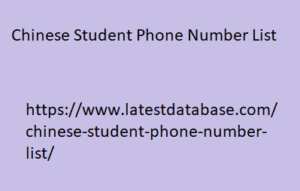Post by account_disabled on Mar 11, 2024 23:43:56 GMT -5
You can visualize a group of data that is not clear at first glance and output it as useful data. 1. Install Python on your PC Python Mr. Nakajima recommends using ``Python'' to perform unsupervised learning. Nakajima: ``There are other languages that can be used for machine learning, such as Java and Scala, but we recommend Python because it is easy to perform data analysis and has a rich library.'' Nakajima: "Beginners should just install pyenv, anaconda2, and anaconda3 ." Currently, the latest version of Python is Python3, which was released in 2008, but there are still many libraries that only support Python2, so it is common to use Python2 and 3 together. That's where pyenv comes in handy.
pyenv is an environment management tool that allows you to easily switch between multiple versions of Python. Also, anaconda is a Python package that includes a set of libraries commonly used in Python. 2. with jupyter-notebook jupyter-notebook Nakajima-san: "Next, it would be useful Chinese Student Phone Number List to include jupyter-notebook." jupyter-notebook is a convenient notebook tool that allows you to easily run and save Python cil. Use it to share past logs of your work and work results with development members. Once the development environment is set up, we can begin development. Mr. Nakajima: "This time, we will perform a cluster analysis of the skill level of engineers.

" Mr. Nakajima prepared (imaginary) Excel data that summarized the projects completed by highly skilled engineers registered on the crowdsourcing service by related skill. There are 3,000 high-skilled engineers and 150 types of skills. This is not a number that can be classified visually! 3. Create a new notebook new notebook From the New tab of jupyter-notebook, click Python3 to create a new notebook. Data read First, load the libraries Pandas, numpy, scikit-learn, and matplotlib. Pandas is a very powerful tool that can read Excel files as is and create data frames. Mr. Nakajima: "The shortest way is to master the machine learning libraries Pandas and numpy." Mr. Nakajima: “It is no exaggeration to say that we will use Python to use this database.” Read csv (tabular file) using Pandas' read_csv function.
pyenv is an environment management tool that allows you to easily switch between multiple versions of Python. Also, anaconda is a Python package that includes a set of libraries commonly used in Python. 2. with jupyter-notebook jupyter-notebook Nakajima-san: "Next, it would be useful Chinese Student Phone Number List to include jupyter-notebook." jupyter-notebook is a convenient notebook tool that allows you to easily run and save Python cil. Use it to share past logs of your work and work results with development members. Once the development environment is set up, we can begin development. Mr. Nakajima: "This time, we will perform a cluster analysis of the skill level of engineers.

" Mr. Nakajima prepared (imaginary) Excel data that summarized the projects completed by highly skilled engineers registered on the crowdsourcing service by related skill. There are 3,000 high-skilled engineers and 150 types of skills. This is not a number that can be classified visually! 3. Create a new notebook new notebook From the New tab of jupyter-notebook, click Python3 to create a new notebook. Data read First, load the libraries Pandas, numpy, scikit-learn, and matplotlib. Pandas is a very powerful tool that can read Excel files as is and create data frames. Mr. Nakajima: "The shortest way is to master the machine learning libraries Pandas and numpy." Mr. Nakajima: “It is no exaggeration to say that we will use Python to use this database.” Read csv (tabular file) using Pandas' read_csv function.


